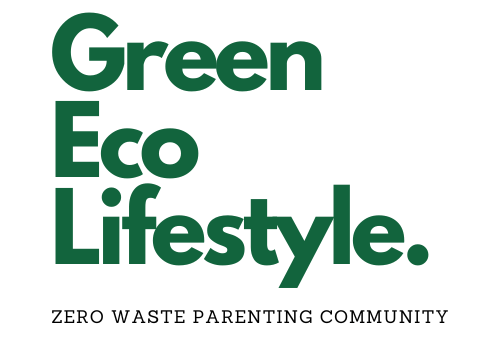
Introduction to Thrifty Kids’ Fashion
Let’s talk about a trend that’s as kind to the planet as it is to our wallets – thrifting for kids’ clothes. If you’re like me, keeping up with our children’s ever-changing sizes can feel like a race we’re never quite winning. This is where the magic of thrift shopping steps in.
I love platforms like Vinted and eBay as it has revolutionized the way I approach children’s fashion, making it easier than ever to find quality, second-hand clothing without breaking the bank.
Not only does this help us save money, but it also aligns with our growing commitment to sustainable fashion. Thrifting allows us to breathe new life into pre-loved garments, reducing waste and our environmental footprint one adorable outfit at a time.
Key Takeaways:
- Embrace thrifting: It’s an eco-friendly and budget-conscious way to update your child’s wardrobe.
- Platforms like Vinted and eBay: These sites have made buying and selling second-hand kids’ clothes more accessible.
- Sustainable fashion: Choosing second-hand contributes to reducing waste and promoting an eco-friendly lifestyle.
Why I Choose Second-Hand for My Child?
Let’s dive deep into why I’ve turned to thrift shopping for my little one’s wardrobe. In the whirlwind of rapidly changing kids’ clothes sizes, I found solace and success in the realms of second-hand clothing through platforms like Vinted and eBay, alongside local charity shops.
This approach isn’t just about cutting costs – it’s a cornerstone for fostering a more sustainable lifestyle.
Environmental impact: Every piece of second-hand clothing that finds a second home contributes significantly to reducing the carbon footprint associated with manufacturing new garments. This choice aligns perfectly with my commitment to an eco-friendly and environmentally conscious lifestyle.
Savings:
The economical benefits can’t be overstated. By choosing thrift shopping, I’ve managed substantial savings, which is particularly welcome given the fleeting nature of children’s fashion needs.
Unique finds:
Thrift stores and online platforms are treasure troves of unique, sometimes barely worn pieces that stand out from the generic offerings of mainstream stores. This has allowed me to curate a distinctive and adaptive wardrobe for my child, fitting all occasions without the need to buy new unnecessarily.
In each choice of pre-loved clothing, I see a step towards a more sustainable future and a lesson in values I wish to impart to my child – the importance of recycling, caring for our planet, and understanding the impact of our fashion choices.
Navigating Online Platforms
When I first dipped my toes into the world of online thrift shopping for my kid’s clothes, platforms like Vinted and eBay were absolute game-changers. Here’s a golden nugget from my own experience – mastering the art of effective searching is crucial.
Start by narrowing down your search with specific keywords:
- sustainable fashion, children’s fashion, nursery essentials, or even special occasion outfits can lead you to those hidden gems.
- Quality is paramount, and I’ve learned to zoom in on photos and read descriptions with an eagle eye.
- I always check the seller ratings, as their track record can be a reliable indicator of your satisfaction. I purchased cheap clothes only to find the seller was dodgy and didn’t post the item. A big waste of time!
- Remember, with a bit of patience and savvy navigating, scoring those eco-friendly, budget-friendly threads becomes a breeze, transforming your kid’s wardrobe into a pinnacle of sustainable fashion without breaking the bank.
Local Thrifting Options
Finding eco-friendly, affordable kids’ clothes can seem daunting, yet local thrift stores and charity shops are treasure troves for sustainable fashion.
When I’m seeking out the best thrifting spots, consider I love looking in community-focused charity shops and car boot sales, often brimming with good quality used children’s fashion.
The best times to dive into thrifting adventures? Mid-week 10.30-12.30pm mornings are usually when new stock hits the shelves, and end-of-season sales can be a goldmine for scoring deals on nursery essentials or special occasion outfits.
I like to keep an eye out for durable brands, adaptable clothing for growing kids, and items that can be mixed and matched for versatile wardrobe options for spring and summer.
Thrifting locally not only supports my local community initiatives my local car boot sale raises money for local food banks and the animal shelter.
Giving Clothes a Second Life
Giving my kid’s worn clothes a second life has become a meaningful ritual for us. Whether we’re donating to local charity shops, listing items on Vinted or eBay, or dropping off at nearby clothes banks, each action carries weight.
It feels good knowing that we’re contributing to a cycle of sustainable fashion, avoiding the pitfall of fast fashion’s greenwashing. It’s not just about clearing space in the closet; it’s about making eco-friendly choices that support our community and the planet.
By choosing to resell or donate, we’re part of a larger movement towards sustainable children’s fashion. We save money and lessen our environmental footprint, proving that small acts can lead to significant impacts.
Thrift shopping for kids’ clothes, whether it’s for nursery essentials or special occasion outfits, has taught us the value of recycling and the importance of garment care to extend the life of every piece we pass on.
Overcoming Common Hurdles
Here are some common hurdles I have had and needed to consider when I started thrifting for my daughter.
Common Thrifting Hurdles for Moms:
- Lack of Time: my busy schedule made it challenging to find time for thrifting in the community.
- Limited Selection: Some of the thrift stores in my area did not always have the items my daughter needed (e.g. welly boots).
- Size Availability: I found it hard finding the right sizes for my kid and myself it was sometimes tricky.
- Condition Concerns: Some thrifted items I found were worn out or damaged and not worth buying or repairing.
- Stigma: I didn’t have this but I know some mums feel embarrassed or judged for thrifting. I hope this changes with more awareness of being eco friendly.
Easy Solutions:
- Plan Ahead: I try to set aside specific times in the month for thrifting in my schedule to make it a priority.
- Expand Your Search: Explore online thrift stores, car boot sales, or community swap events for more options.
- Flexibility with Sizes: I look for adjustable or versatile clothing, and don’t hesitate to try items that are slightly bigger or smaller.
- Check Carefully: I now inspect items thoroughly for any damage or signs of wear before purchasing.
- Embrace Thrifting: I try to remember that thrifting is a smart and sustainable choice, and be proud of the money-saving and eco-friendly benefits it offers.
Care and Maintenance of Thrifted Items
Taking on the journey of thrift shopping for kids’ clothes, from platforms like Vinted and eBay to the cozy corners of local charity shops, introduces us to the world of sustainable fashion but with one little challenge – keeping these second-hand treasures in top condition. As someone who’s navigated the thrifty terrain of children’s fashion, from nursery essentials to special occasion outfits, I’ve gathered some essential garment care techniques that promise to extend the life of these eco-friendly finds.
- Laundering Tips: Always check the label before washing. For those one-of-a-kind thrifted pieces, opting for a gentle cycle with eco-friendly detergent works wonders in preserving fabric quality while being kind to the planet.
- Mending Know-How: Embracing DIY fixes for minor wears and tears not only adds a personal touch but also champions the recycling spirit of thrift shopping. A simple sewing kit and some online tutorials have guided me through patching up and revamping many a garment.
- Storage Solutions: Proper storage is key to maintaining the condition of second-hand clothes. I’ve found that breathable cotton garment bags and avoiding overcrowding in drawers keep clothes fresh and ready for the next adventure.
Nurturing Eco-Conscious Kids
Teaching our kids the ropes of thrift shopping isn’t just a lesson in saving money, but it’s also a crucial step towards an eco-friendly lifestyle. I’ve found that involving them in the process of choosing second-hand clothes, whether it’s through local thrift stores, online platforms like Vinted or eBay, or even digging through charity shops, turns an ordinary shopping day into an adventure. This, my friends, isn’t just about finding that one-of-a-kind piece; it’s about instilling values of sustainability and recycling from a young age. By showing them how donating clothes to a clothes bank or charity shop can give these items a new life, we’re teaching them about the importance of reducing waste. And let’s not forget the joy of discovering special occasion outfits that tell a story, making the entire experience a treasure hunt for both of us. Becoming eco-conscious is a journey, and by nurturing these habits early, we’re not just saving money; we’re contributing to a more sustainable planet.
Wrapping Up with Style and Sustainability
As we’ve journeyed together through the world of thrifting for kids’ clothes, diving into the eco-friendly realms of sustainable fashion, we’ve unearthed a wealth of knowledge and strategies for dressing our little ones in style without succumbing to the pitfalls of fast fashion. Our exploration has not only highlighted the immense savings possible through platforms like Vinted and eBay, but also the joy of uncovering unique finds in charity shops and local thrift stores. By choosing second-hand clothing, we’re making a conscious decision to reduce our environmental footprint, emphasizing the importance of recycling, reselling clothes, and donating to make fashion a force for good.
Throughout this exploration, we’ve tackled common hurdles, from navigating online shopping for nursery essentials to finding that perfect outfit for a special occasion, proving that with a bit of savvy and patience, there’s almost nothing we can’t find second-hand. We’ve also delved into garment care, ensuring that the treasures we find can be loved and used for as long as possible. Perhaps most importantly, we’ve discussed ways to involve our children in the process, teaching them the value of sustainable, environmentally friendly choices from a young age.
In wrapping up, let’s remind ourselves that each choice to buy second-hand, each decision to donate or resell, not only saves us money but also conveys a powerful message about the world we want to leave for our children. Through conscious consumption and embracing the world of thrift shopping, we’re not just dressing our kids in cute, affordable clothes; we’re also dressing them in the values of conservation, mindfulness, and respect for our planet. It’s in these small, everyday choices that we find the potential for significant change, shaping a future where fashion is kind to both people and the planet.
